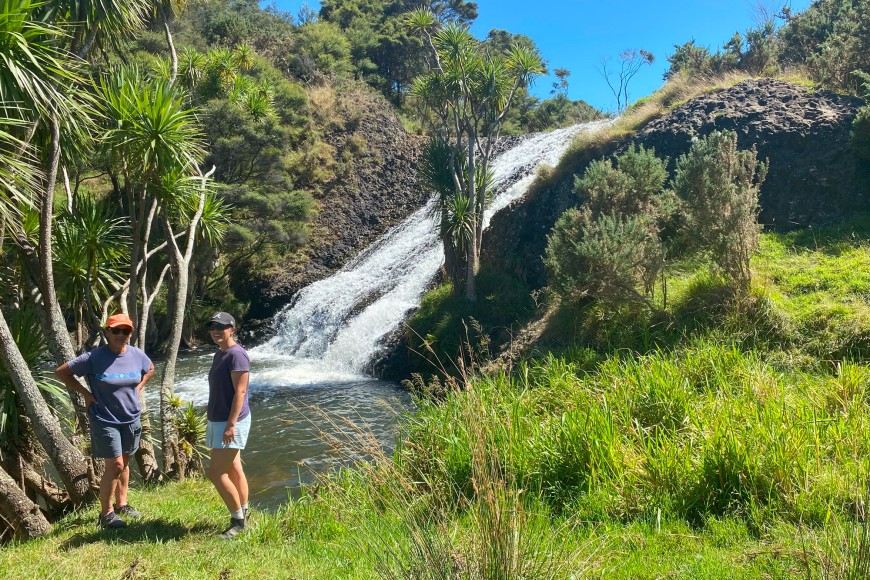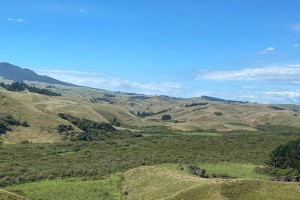Kimikimi noa ana, rapurapu kau ana Kei whea ngā matuku noho puku, ngā kawau horo ika, ngā ruru kai kiore
E... ka rehua i te ata
Searching... seeking... in vain
Where are the shy furtive bitterns,the fish-gulping shags, the rat-devouring owls? They are fading from sight in the early morning haze.
Kairangahau Māori Mahuru Wilcox leads Whenua Koiora, a project involving kaitiaki Māori to identify climate change impacts on wetland restoration projects. Mahuru has developed a resilient restoration wetland plan in partnership with Ngāti Whakamarurangi for the Toreparu Wetland, West Coast, Waikato Region. Resilient restoration is about restoring natural habitats as well as providing Māori communities who live near wetlands with strategies to deal with these climate change impacts.

Kairangahau Māori Mahuru Wilcox and Taruke Thomson (Ngāti Whakamarurangi, Mōtakotako Marae) visit a site at Horokawau Falls, Toreparu Wetland.
Mahuru says both mātauranga-ā-hapū (local hapū knowledge) and science are needed for a holistic approach to resilient restoration. “When we want to build resilient restoration plans for our habitats like wetlands, we need to be looking at what data is available. For Toreparu Wetland, which is very close to the sea, the inundation of saltwater is going to significantly impact the breeding habitats of native kōkopu and īnanga and affect where people may harvest tuna. Combining data from external sources, such as existing monitoring information, with historical records, and traditional place names around the wetland can all give indicators on what some of those community priorities are,” says Mahuru.
Mahuru says her role as a kairangahau is to support hapū aspirations based on mana whenua key priorities and aspirations.
“The mana whenua of Toreparu Wetland are Ngāti Whakamarurangi and the key priorities and sites of significance have been identified either through their [Motakotako Marae Hapū] Environment Plan, or through some of their mahinga kai priorities that they have for the marae. My role is to come in and support their aspirations and objectives and look at what climate data is available for those impacts, and how we move forward in terms of restoration and what that can look like.”
A Toreparu Wetland Restoration StoryMap is a publicly available resource that combines local historical knowledge, hapū aspirations for restoration, and future climate change scenarios to highlight restoration approaches of key priority sites.


